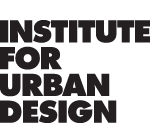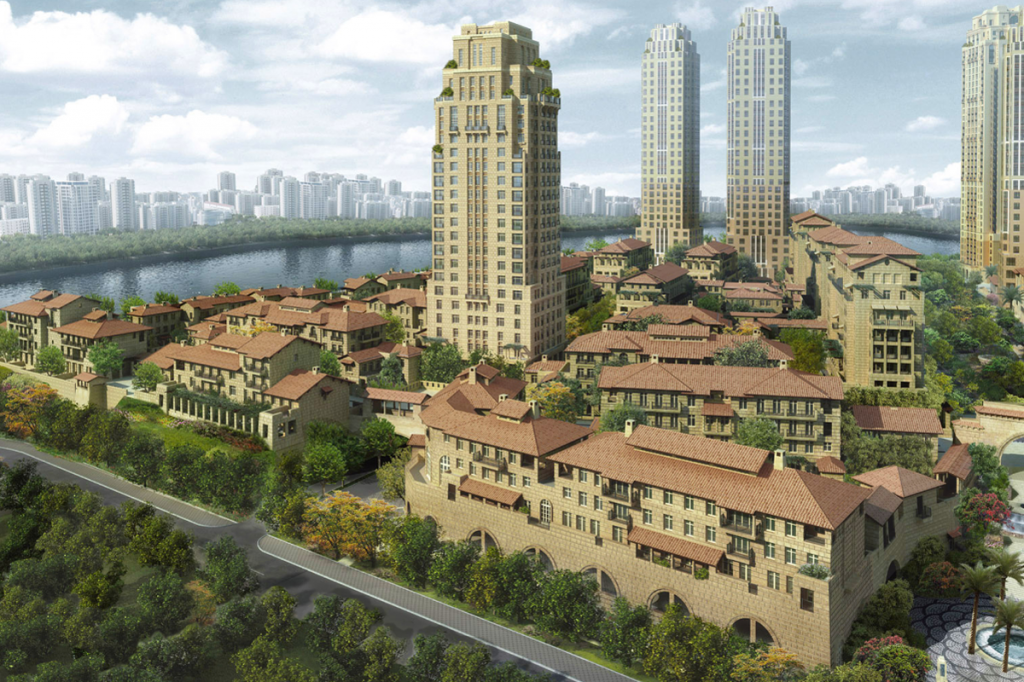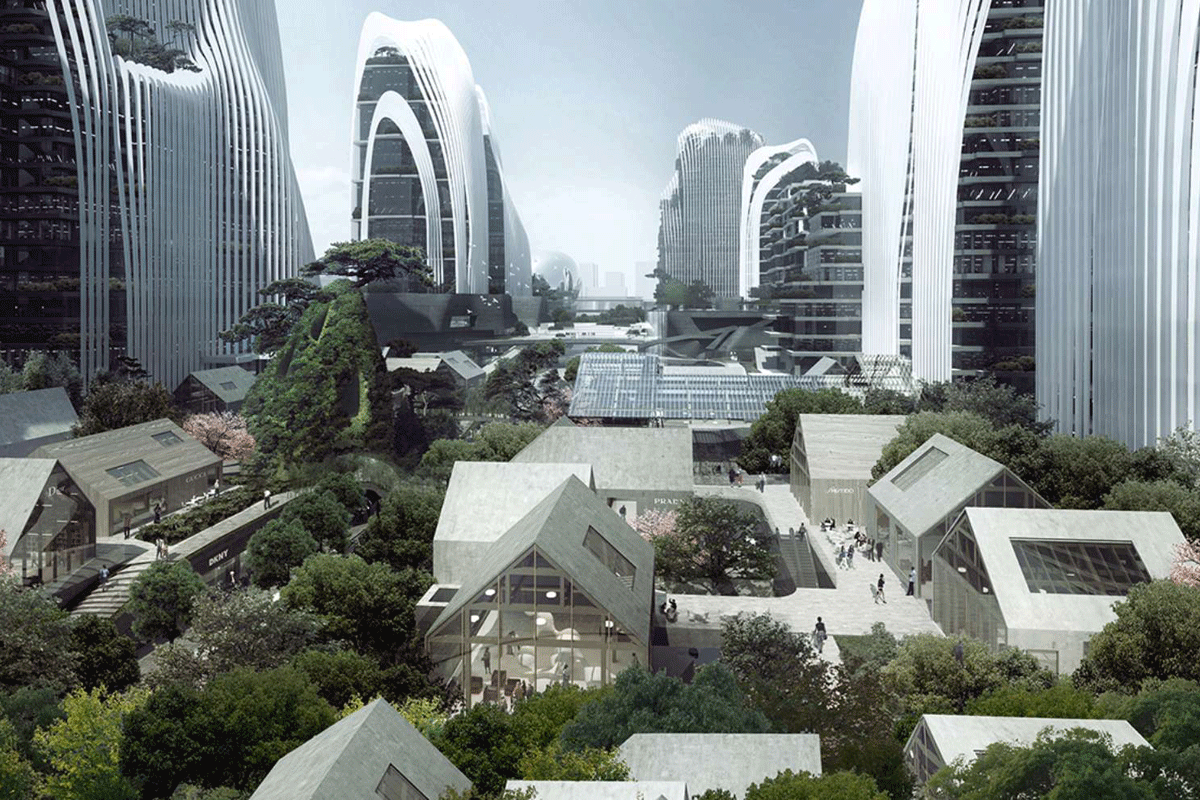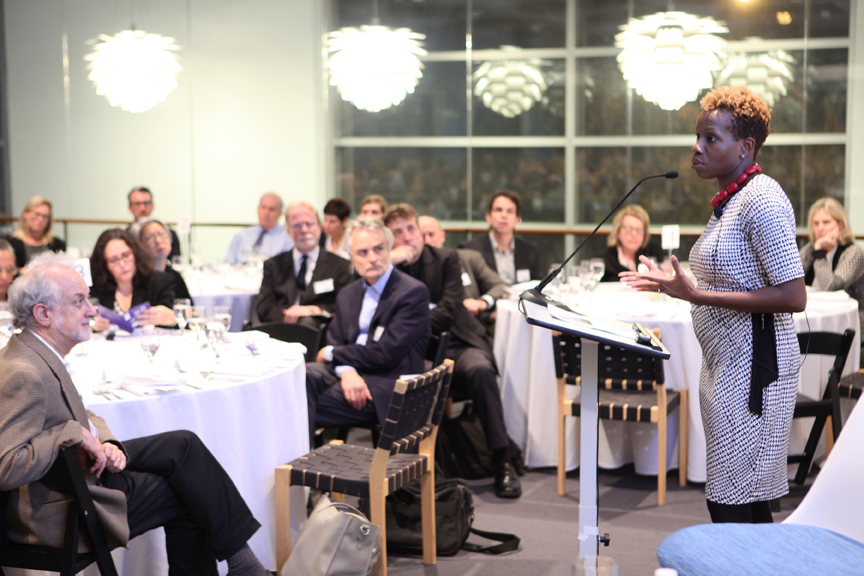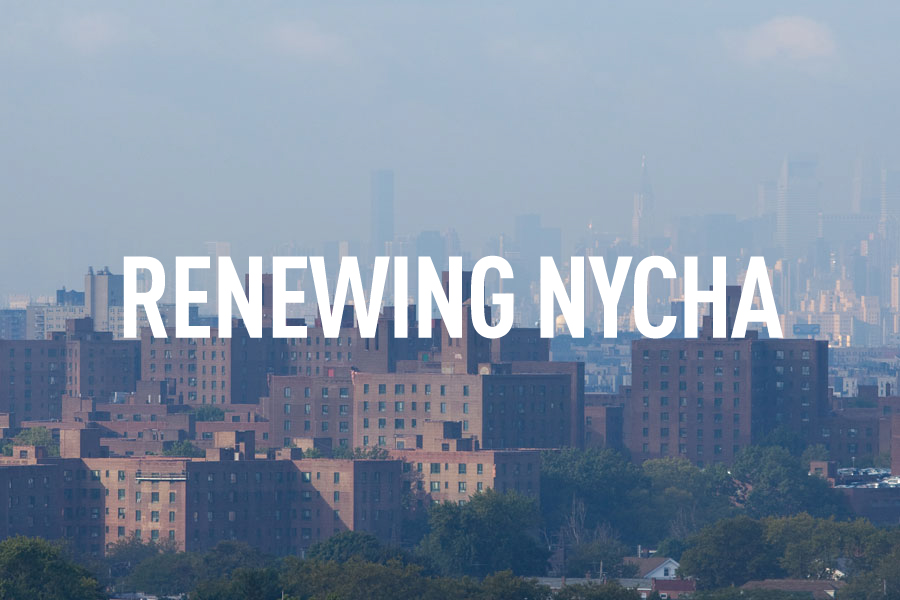 After our inspiring spring forum surveying the state of public housing across the nation, we turned our attention to New York City. As many as 600,000 residents live in public housing managed by the New York City Housing Authority (NYCHA). Yet the authority faces mounting challenges: aging buildings in various states of disrepair, dwindling federal funding, and a waiting list of over 240,000.
After our inspiring spring forum surveying the state of public housing across the nation, we turned our attention to New York City. As many as 600,000 residents live in public housing managed by the New York City Housing Authority (NYCHA). Yet the authority faces mounting challenges: aging buildings in various states of disrepair, dwindling federal funding, and a waiting list of over 240,000.
Over five breakfasts in five weeks, we invited 25 experts to explore the best and brightest ideas to rebuild New York City’s public housing. How might we open up isolated campuses, preserve aging buildings, and even build new housing on NYCHA land while confronting a growing deficit?
Reimagining Public Housing
How could we improve public housing for residents and the greater city through design? Our first roundtable aimed to reimagine public housing buildings and campuses for the 21st century.
Michael Kwartler (Environmental Simulation Center) kicked things off by dusting off his pioneering 1991 study Building in Your Backyard which proposed new affordable housing on underbuilt NYCHA land. Andrew Bernheimer (Bernheimer Architecture) considered two student proposals for Chelsea’s Fulton Houses–the first, adding balconies and cutting double-height spaces into existing towers; and the second, inserting agriculture into public housing to increase affordable food supply.
Mitch McEwen (A(n) Office) called for the housing authority to tear down the black gates around NYCHA’s abundant open spaces and allow the Parks Department to manage the parks. Laura Starr (Starr Whitehouse) explored aspects of the ‘BIG U,’ a winning proposal of the Rebuild by Design competition that envisions how artificial wetlands, multi-purpose levies, and landscape berms that also serve as public space could protect Lower Manhattan–and its numerous housing developments–against future storm surge.
Susannah Drake echoed Laura’s call for resilient design through the creative use of landscape architecture. She presented a current project in the Two Bridges neighborhood to create new gardens and social spaces on NYCHA land that double as passive flood protection infrastructure.
Finally, John Woelfling (Dattner Architects) presented Prospect Plaza, New York City’s only Hope VI project in Brownsville, Brooklyn. The project envisions lower-scale, mixed-use housing, closer to the context of the neighborhood but with a similar number of units as the two high-rise towers demolished a decade ago.
Ending the IsolationFamed critic Jane Jacobs once called NYC’s public housing campuses “self-isolating.” Our second workshop was dedicated to opening up NYCHA, through design and policy initiatives. Rosanne Haggerty (Community Solutions) presented her groundbreaking plan with Alexander Gorlin Architects to revamp Brownsville’s public housing with new infill housing, retail, and improved public space without demolishing a single building or displacing a single resident. James Lima recapped the ‘BIG U’ proposal, suggesting ‘community resilience districts’ in public housing among other strategies in building a more resilient Lower Manhattan.
Joseph Shuldiner (Municipal Housing Authority of the City of Yonkers) and Victor Bach (Community Service Society) suggested policies that could make the housing authority a more transparent force in the city. Shuldiner suggested the authority give residents a greater voice in the planning process by giving them technical training and the financial resources necessary. Bach proposed allowing NYCHA residents to report unsafe living conditions to the City instead of NYCHA call centers, allowing advocates to raise awareness about major violations.
Paying for Public HousingWhat can be done for public housing while the authority’s capital shortfall skyrockets and federal funding fades? Our third roundtable explored new means of financing the housing authority. Emily Youssouf (NYU Schack Institute) proposed creating a new federal tax credit designed specifically to rehabilitate public housing. Adam Weinstein (Phipps Houses) suggested operating costs were to blame, drawing comparisons to affordable housing managed by nonprofits (occasionally even on NYCHA land).
Marc Zuluaga (Steven Winter Associates) surveyed the enormous savings that could be achieved by energy retrofits on NYCHA’s aging buildings. Joseph Rose (Rose Urban Strategies) contemplated the sale of air rights on underbuilt NYCHA land to create new funding for the authority.
Finally, Nicholas Dagen Bloom (NYIT) proposed reviving a “No Cash Subsidy” housing program to build no-frills market-rate housing on NYCHA land. A new housing program on NYCHA land could provide a market-rate alternative for the middle class while providing NYCHA with rental income to help defray their mounting deficit.
A New Lease on LandThe Bloomberg administration’s “Land Lease” program to build 80% market-rate housing and 20% low-income housing on some underutilized parking lots, playgrounds and open space was deeply opposed by residents and later suspended. Our fourth roundtable questioned whether there were other opportunities to build on NYCHA land that could benefit both residents and the greater city.
Fred Harris (formerly NYCHA) defended building new market-rate housing on NYCHA land and dedicating rental income to shore up affected developments. Tom Angotti (Hunter College) called for the public to take responsibility for public housing again, rather than allow the authority to pursue solutions without sufficient community consultation.
David Burney (Pratt Institute) recommended building senior housing on NYCHA land to enable elderly public housing residents with oversized apartments to move out and allow new families to move in. Julia Vitullo-Martin (Regional Plan Association) suggested that ground-level retail be a key consideration in any new development on NYCHA land.
Frank Sciame (Sciame Construction) proposed “swing housing” where residents could live while their buildings were being rebuilt. But he went further, suggesting “swing housing” be built as mixed-use and mixed-income to help reduce poverty in areas with public housing and make those neighborhoods more livable.
Finally, Mark Willis (NYU Furman Center) put NYCHA’s role in proper context: New York City needs to build and maintain much more affordable housing to confront the present housing crisis, and NYCHA land is only one piece of the puzzle.
New Social HousingHousing New York City affordably is not the task of NYCHA alone. It will take a coalition of advocates, developers, and civic leaders to combat rising rents and house a growing population. Our fifth workshop looked at alternative models of affordable housing that the new mayoral administration could consider.
Susanne Schindler (Parsons The New School & Columbia University) kicked things off with an example from Zurich, where a single housing cooperative incorporated 1-4 bedroom units, 5-6 bedroom units, accessory units for extended family, and even micro-units. Lucille McEwen (Manhattan Valley Development Corporation) suggested accelerating an existing City program to convert rentals in city-owned properties to cooperatives for just $250 per unit.
Magnus Magnusson (Magnusson Architecture + Planning) touted inclusionary zoning models like 50/30/20 (50% market-rate / 30% middle-income / 20% low-income) and 25/25/25/25 (25% market-rate / 25% middle-income / 25% moderate-income / 25% low-income) that could accomplish far more than the current 80/20 model. And finally, Matthew Blesso (Blesso Properties) called for the city to reconsider communal living arrangements of high-density, small-living space housing that suit the desires of today’s young people.
Image Credit: David Schalliol
